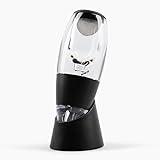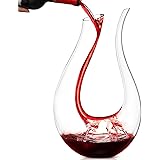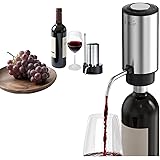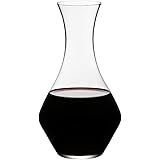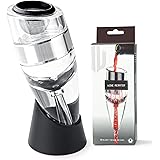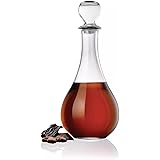Master the Art of Wine Pairing: Elevating Your Pasta Dishes
Many home cooks and food enthusiasts often find themselves at a crossroads when it comes to selecting the perfect wine to complement their favorite pasta creations. The myriad of choices, coupled with complex terminology, can make the art of wine pairing seem daunting, leaving many to simply grab a familiar bottle or even forego wine altogether. However, understanding a few foundational principles can unlock a world of enhanced flavors and truly transform your dining experience. The video above, featuring sommelier André Hueston Mack, offers invaluable insights into expertly pairing wine with classic pasta dishes, guiding you toward unforgettable culinary harmony.
This article builds upon André’s expert advice, diving deeper into the nuances of selecting the ideal wine to elevate your pasta. We’ll explore the characteristics of both the dishes and the wines, uncovering the “why” behind successful pairings. By focusing on key elements like acidity, richness, and aromatics, you can move beyond guesswork and confidently choose a bottle that brings out the best in every bite. Prepare to master the fundamental techniques that sommelier André Hueston Mack champions, ensuring your next pasta night is nothing short of exceptional.
The Fundamentals of Food and Wine Harmony
Achieving a perfect food and wine marriage begins with understanding how different elements interact on your palate. Just like individual instruments in an orchestra, each component of a dish and a wine contributes to the overall symphony of flavor. First, it is crucial to consider the concept of palate cleansing, a technique sommelier Mack expertly illustrates with the chewing gum analogy. This refers to the wine’s ability to refresh your taste buds, washing away lingering flavors and preparing your palate to experience the next bite as if it were the first.
Next, the two primary approaches to successful pairing are comparing and contrasting. Comparing, or “pairing like with like,” involves matching similar flavor profiles or intensities between the food and wine. Conversely, contrasting pairs disparate elements, such as a rich sauce with a high-acid wine, where the wine cuts through the richness, creating balance. Both methods aim to enhance, rather than overpower, either component, ensuring a harmonious experience.
Additionally, identifying the key elements of a dish is paramount. Consider its core flavors: is it rich, salty, smoky, spicy, or bitter? Evaluate its texture—creamy, chewy, crunchy, or dense—and note its level of acidity or fat content. Acknowledging these attributes helps you pinpoint what your chosen wine needs to achieve. This analytical approach empowers you to make informed decisions that extend far beyond specific recipes.
Furthermore, understanding key wine characteristics forms the other half of the pairing equation. Acidity in wine provides freshness and cuts through richness, acting as a palate cleanser. Tannins, typically found in red wines, create a drying sensation and can complement fatty or protein-rich foods. Fruitiness contributes sweetness perception and balances heat or bitterness, while the wine’s body (light, medium, full) should generally match the dish’s intensity. Factors like alcohol content, minerality, and oak influence also play significant roles, each offering unique contributions to the pairing.
Pairing Principles in Practice: Classic Pasta Dishes
With these foundational principles in mind, let’s explore how sommelier Mack applies them to five classic pasta dishes, offering specific wine recommendations and the reasoning behind each choice. These examples serve as excellent blueprints for your own pairing adventures. You’ll discover how to appreciate both traditional choices and innovative alternatives, expanding your repertoire of wine with pasta dishes.
Carbonara: A Dance of Richness and Acidity
Authentic Carbonara is a symphony of rich flavors and textures, starring smoky guanciale, creamy egg yolk sauce, salty Pecorino Romano cheese, and a generous crack of black pepper, often served with rigatoni or spaghetti. The dish’s inherent richness and saltiness demand a wine that can cut through the density, cleanse the palate, and provide a refreshing counterpoint. Without such a wine, the meal can become heavy and palate fatigue sets in quickly, diminishing the enjoyment of subsequent bites.
Sommelier Mack’s solution for this decadent dish is a youthful Chianti, an Italian red wine with Sangiovese as its primary grape. Chianti is renowned for its high acidity and fruit-forward profile, which beautifully balances the Carbonara’s richness and saltiness. This acidity acts as a natural palate cleanser, resetting your taste buds and allowing you to savor each forkful anew. The medium body of a younger Chianti also aligns well, offering substance without overwhelming the creamy sauce, creating a truly harmonious experience.
Lasagna Bolognese: Embracing Robust Flavors
Lasagna Bolognese, with its layers of pasta, a rich Bolognese sauce (typically ground beef, pork, and veal), creamy Béchamel, and gooey cheese, represents a dense, comforting, and intensely flavorful meal. This dish screams for a wine with a substantial presence, something that can stand up to its hearty character and complex textures. Its stewed tomatoes, cooked-down meatiness, and varied cheeses contribute to a profound umami experience that requires thoughtful wine selection.
For such a substantial dish, André suggests a richer, fuller-bodied wine, and specifically recommends a Barbera d’Alba from Italy. This wine offers an “easy-drinking,” fruit-forward style characterized by notes of licorice, strawberry, and tart cherry, with subtle peppery undertones. Its decent acidity effectively cuts through the saltiness of the cheese, while its fruitiness and body perfectly match the lasagna’s rich, dense texture. Another excellent, albeit less conventional, choice is a rich, oaked Chardonnay from a warm region, which mimics the body and complexity often found in red wines due to its time spent aging in oak barrels.
Spaghetti alle Vongole (Clams): A Taste of the Ocean
Spaghetti alle Vongole is a delicate yet vibrant dish, highlighting the briny freshness of clams in a light white wine sauce, often infused with garlic, parsley, and a hint of chili flakes. The most prominent characteristic is the “waft of the ocean,” demanding a wine that echoes this marine quality. This dish’s elegance and aromatic complexity require a wine that complements its minerality and freshness without overpowering the subtle flavors of the seafood.
Here, the concept of regional pairing often comes into play, as wines from coastal areas frequently develop qualities that complement local seafood. Sommelier Mack selects Falanghina, a white grape indigenous to Italy, particularly thriving in the coastal region of Campania. A 2021 Falanghina offers a mineral-driven profile with notes of stone fruit, Mirabelle plums, peaches, and a distinct “seashell” or “salty rock” quality. Its crisp acidity and underlying brininess perfectly mimic and enhance the clam juice, while a touch of ripe fruit at the finish beautifully balances the heat from the chili flakes. The freshness and brightness imparted by coastal influences on the grapes are key to this successful pairing.
Orecchiette with Sausage and Broccoli Rabe: Balancing Spice and Bitterness
Orecchiette with Sausage and Broccoli Rabe is a robust dish featuring big, bold flavors: spicy Italian sausage, the earthy and often bitter notes of broccoli rabe, and sometimes a hint of sweetness from the sausage. The challenge here lies in managing the heat from the chili flakes and the inherent bitterness of the greens, both of which can clash with many wines. This dish demands a wine that can embrace these powerful elements and cleanse the palate effectively.
For this complex pasta, André makes an unconventional yet brilliant choice: a rosé. Specifically, he highlights Edmonds St. John’s Bone Jolly rosé from California. Rosé offers the best of both worlds—the fruitiness and red berry notes (like rhubarb, strawberry, and raspberry) typically found in red wines, combined with the refreshing lightness and chill-serving quality of a white wine. Crucially, its lower alcohol content is ideal for spicy dishes, as high alcohol tends to accentuate heat on the palate. The ripe fruit perception in this New World rosé effectively foils the spiciness and balances the bitterness of the broccoli rabe, leaving the palate clean and ready for the next delicious bite.
Beyond the Rules: Trusting Your Palate
While these guidelines from sommelier André Hueston Mack provide an excellent framework for elevating your wine pairing pasta experiences, it is essential to remember that personal preference always reigns supreme. The true joy of food and wine lies in discovery and enjoyment, not in strict adherence to rigid rules. Think of these suggestions as a compass to guide your exploration, rather than a definitive map.
Experimentation is key; don’t be afraid to try new combinations and discover what truly delights your taste buds. Your palate is unique, and what creates a “perfect marriage” for one person might differ for another. Ultimately, the goal is to enhance your personal dining experience. By applying these thoughtful principles to your wine with pasta choices, you are not just selecting a drink; you are crafting a more profound and enjoyable culinary journey, one delicious bite at a time.


